Patty Is Dead, You're Billie Now
People? Please stay together, and when we stop, circle around me. This is about as loudly as I can speak, so if you're having any difficulty hearing me, move in closer. Please follow me into the first gallery, where we'll have a look at the opening frame.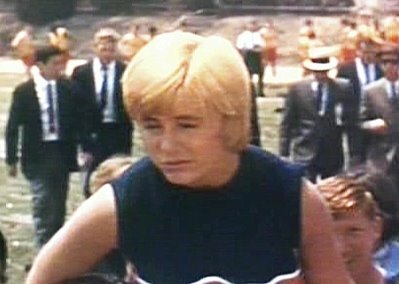 Why is this 15-year-old miserable during a high-spirited celebration of her athletic achievement? Is it because her dad is Mr. Magoo? Is it because her 'high school boyfriend' is a 24-year-old? Or is it because she's a "lonely little in-between?"
Why is this 15-year-old miserable during a high-spirited celebration of her athletic achievement? Is it because her dad is Mr. Magoo? Is it because her 'high school boyfriend' is a 24-year-old? Or is it because she's a "lonely little in-between?"
You're looking at a still frame taken directly from the major motion picture Billie. This is our first look at Patty Duke as the distressed, confused tomboy "with the beat," Billie.
Who is Billie?
The lyrics of the title song offer no help whatever:
Wears her hair like a Billie should wear
She walks like a Billie should
Talks like a Billie should
On her a Billie looks good
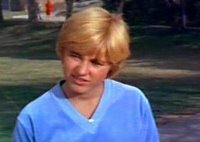 Show (itself an exploration of duality), the MPAA code forbade movies on the subject. However, the filmmakers behind Billie employed a clever and unusual technique to get their messages across.
Show (itself an exploration of duality), the MPAA code forbade movies on the subject. However, the filmmakers behind Billie employed a clever and unusual technique to get their messages across.In the literary world, the technique is known as "symbolism." Developed in the late 19th century, symbolism is a way of exteriorizing [sic] the the interiorized [sic] lives of characters by selectively imbuing ordinary household items with hidden, profound levels of meaning.
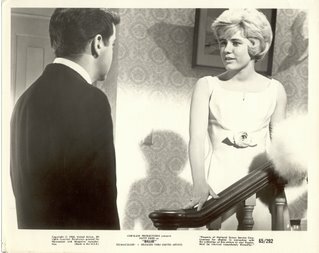 When Billie sniffs her track shoes, they are more than track shoes. When Billie pours out her anguish to a stuffed wolf, the audience becomes restless... due not only to Patty Duke's performance, but also to the large photograph of her father, Tyler Fitzgerald, next to her bed. At the end of her song, Billie is left with a stark choice... the smell of the track shoe in her left hand - or - the bottle of perfume in her right? Symbolically, Billie must choose: male, or female? The character literally "weighs her options." Indeed, it is from the end of this scene that our modern phrase "heavy-handed symbolism" is derived.
When Billie sniffs her track shoes, they are more than track shoes. When Billie pours out her anguish to a stuffed wolf, the audience becomes restless... due not only to Patty Duke's performance, but also to the large photograph of her father, Tyler Fitzgerald, next to her bed. At the end of her song, Billie is left with a stark choice... the smell of the track shoe in her left hand - or - the bottle of perfume in her right? Symbolically, Billie must choose: male, or female? The character literally "weighs her options." Indeed, it is from the end of this scene that our modern phrase "heavy-handed symbolism" is derived.Without further adieu [sic], here is the pivotal scene that captures the essence of gender dyphoria with all the pungency of a pair of sweaty cleated track shoes - all sparked by a small, insignificant, teensy-weensy, it-meant-nothing slip of the tongue by Billie's father, Thurston Howell III.
Billie is 'out of sync' with her world; is it any wonder that, by the end of the clip, her lips are out of sync with the soundtrack?
Please follow me into the second gallery to learn more about this talented, troubled character.
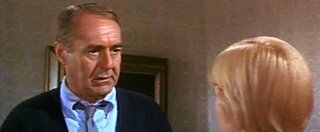 Patty Duke saw Billie as her first 'real' film role. When Ms. Duke blindly accepted a minor role in a forgotten picture called The Miracle Worker, she found to her horror that she had had no lines, and worse, the movie was in black and white. Duke's television program proved popular, but it, too, was in black and white. Duke saw Billie as her chance to prove, once and for all, that she could act in color. Eventually, she would move to Idaho.
Patty Duke saw Billie as her first 'real' film role. When Ms. Duke blindly accepted a minor role in a forgotten picture called The Miracle Worker, she found to her horror that she had had no lines, and worse, the movie was in black and white. Duke's television program proved popular, but it, too, was in black and white. Duke saw Billie as her chance to prove, once and for all, that she could act in color. Eventually, she would move to Idaho.Here in the second gallery, we're surrounded by portraits of the members of the so-called "Sit-com Mafia," who demanded to be included in any motion picture project headed for the big screen that wasn't really much better than that crap they show on TV. I'm sure you recognize them:
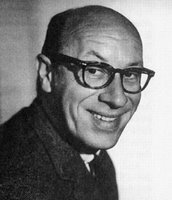
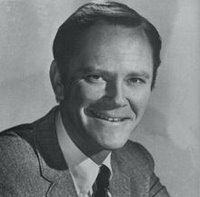
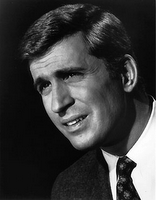
At right, from left to tight: Don Hollinger, that wimp that hung out with Marlo Thomas; one of the Darrins that appeared on Bewitched; Mel Cooley, who appeared on The Dick Van Dyke Show.
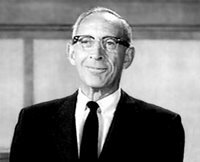 And the gruff-but-lovable Coach Jones, who appeared on The Real McCoys, The Thin Man, Perry Mason, The Lucy-Desi Comedy Hour, Richard Diamond Private Detective, The Millionaire, The Ann Sothern Show, The Gale Storm Show, Bachelor Father, The Twilight Zone, The Bob Cummings Show, The Tab Hunter Show, Pete and Gladys, Surfside Six, Maverick, Mr. Ed, Dennis The Menace, McKeever and The Colonel, 77 Sunset Strip, Burke’s Law, Make Room for Daddy, The Andy Griffith Show, The Bill Dana Show, The Bing Crosby Show, The Smothers Brothers Show, Get Smart, Honey West, The Munsters, The Pruitts of Southampton, F Troop, The Man From Uncle, He and She, The Wild Wild West, Gomer Pyle, U.S.M.C., Judd for the Defense, Green Acres, Petticoat Junction, The Flying Nun, The Debbie Reynolds Show, The Beverly Hillbillies, Nanny and the Professor, Bewitched, The Odd Couple, The Rookies, Rhoda, Karen, Family, Maude, Soap, Mork and Mindy, Little House on the Prairie, St. Elsewhere, L.A. Law, I Love Lucy... and the film Mother Is A Freshman.
And the gruff-but-lovable Coach Jones, who appeared on The Real McCoys, The Thin Man, Perry Mason, The Lucy-Desi Comedy Hour, Richard Diamond Private Detective, The Millionaire, The Ann Sothern Show, The Gale Storm Show, Bachelor Father, The Twilight Zone, The Bob Cummings Show, The Tab Hunter Show, Pete and Gladys, Surfside Six, Maverick, Mr. Ed, Dennis The Menace, McKeever and The Colonel, 77 Sunset Strip, Burke’s Law, Make Room for Daddy, The Andy Griffith Show, The Bill Dana Show, The Bing Crosby Show, The Smothers Brothers Show, Get Smart, Honey West, The Munsters, The Pruitts of Southampton, F Troop, The Man From Uncle, He and She, The Wild Wild West, Gomer Pyle, U.S.M.C., Judd for the Defense, Green Acres, Petticoat Junction, The Flying Nun, The Debbie Reynolds Show, The Beverly Hillbillies, Nanny and the Professor, Bewitched, The Odd Couple, The Rookies, Rhoda, Karen, Family, Maude, Soap, Mork and Mindy, Little House on the Prairie, St. Elsewhere, L.A. Law, I Love Lucy... and the film Mother Is A Freshman.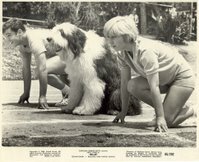 Let's move on to the third gallery, "Billie's Problem."
Let's move on to the third gallery, "Billie's Problem."On a non-symbolic, or "literal" level, Billie's problem is that she can run faster than the boys can run. But how to get this on film? Special effects wizard Luis Buñuel, who had retired after his 1953 Oscar win for "The Twonky," was coaxed out of the ICU and back into the USA to once again achieve the impossible: make it look like a girl can run faster than a boy. As if.
Recently declassified, the confounding illusion of speed can now be explained. Ms. Duke was actually jumping up and down on a low platform attached to the back of a speeding pickup truck, with the camera shooting backwards from the bed of the pickup, thus creating the illusion that Billie was running faster than - and rapidly outdistancing - her male competition. If you look carefully, you may be able to discern which scenes are special "trick shots" and which were photographed in a normal fashion (A 1960's audience would have been baffled).
Our fourth and final gallery is The Gallery of Happy Endings.
Two different endings were filmed, and, at great expense, the Billie production team reunited all living members of the Pomona audience that attended the first showing of The Magnificent Ambersons. The "Serious Ending"- in which Billie hears that Coach Jones is in the hospital after being hit by an automobile and uses her high-speed running power to reach the operating room in time to donate the muscles from her legs to fashion the Coach a new heart - was so disliked that many in the audience suspected that Billie had been secretly directed by Orson Welles.
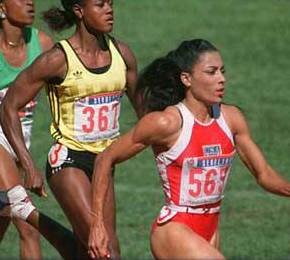 In the released version, Billie quits the track team because she "likes being a girl" and flees the city with Deckard, whom she suspects is a replicant.
In the released version, Billie quits the track team because she "likes being a girl" and flees the city with Deckard, whom she suspects is a replicant.Florence Griffith Joyner, who saw the film at the tender age of 6, has said that she was "negatively inspired" by Patty Duke's masterful performance and has since credited her Olympic wins to "having the beat."
I'll be happy to answer any questions you might have, and for the truly masochistic, the trailer is playing continuously in Gallery 5. (Look for dancer/choreographer Donna McKechnie in the Where's Waldo shirt)
Labels: Florence Griffith Joyner, Mr. Magoo, Orson Welles, Patty Duke, Pomona, The Twonky


2 Comments:
Your essay about "Billie" has caused me to have to lie down with an ice pack on my head. I thought I was the only one who cared about the deeper meanings of this movie and was wowed by then-unknown Donna McKechnie's "cameo" in the dance sequences. Clearly I am not as special as I once believed myself to be.
Thank you all the same,
R. Pela
By Anonymous, At
November 6, 2007 at 4:09 PM
Anonymous, At
November 6, 2007 at 4:09 PM
I wonder if Ellen DeGeneres saw this film.
By jz1360, At
August 20, 2009 at 12:56 PM
jz1360, At
August 20, 2009 at 12:56 PM
Post a Comment
Subscribe to Post Comments [Atom]
<< Home